Opening 16/11 - 16/11 - 14/06, 2012
DON’T EXPECT ANYTHING
Intangible messages journey through time and space through the viewer’s perception of the works on show. Images understood as a return to the past of ideas and ideals, events and icons, symbols and stories. The images are translated physically by the artists into photographs of historical characters, into revised material, stills taken from old films or graphic reworkings of electronic images.
But do not expect anything, since it is precisely the act of perception, more than the objects of perception, which is important. The physicality of that which is exhibited rises to a documentary residue, to memory and evocation, thanks to the in-depth research that has been conducted.
Be ready however to welcome these forgotten thoughts, these fragments of the past as evocations of that which space and time have physically distanced from us and which the artists let us see in a manner both poetic and deliberately indeterminate.
The subject of Becky Beasley’s (1977 United Kingdom, lives in Antwerpen) research is based on autobiographic memory mediated by literary references. Her investigation moves in a balance between sculpture and photography like a practical visionary who juxtaposes handcrafted objects with photographic representations of them. Such an exercise has principally oneiric connotations with marked references to Surrealism and Minimalism.
A strong interest in collective history both from a personal and social point of view is present in the work of Nina Beier & Marie Lund (1975 & 1976, live in London). The starting point for their research is their personal history which reveals the ephemeral and the accidental. Their work is characterized by the first performances of the Seventies, for their practical videos and sculptures. The House and the Backdoor on display is a wooden box which contains a collection of books which were the duplicates that overlapped between Nina’s parents two collections when they moved in together. Nina’s mother had stored her copies in the attic since. This work objectifies the experience of safeguarding one’s personal identity in a relationship. Time and history are a fundamental element of their work: “…We return to the stories which have been put apart and that we can unroll and evoke…”
The sculptures made of materials like plastic, hydrating body lotion, cotton, chalk, paint, egg and vaseline are described by Karla Black (1972 Alexandria, lives in Glasgow) as: “Almost painting, performance or installations while actually, and quite definitely, being sculpture” Her sculptures and their titles create a contrast between material experience and language in which the former overcomes the latter. Her works have their roots in psychoanalysis and feminism but also in expressionist abstraction, in Viennese Actionism, in Land Art and in feminist performances.
Landscapes, objects, installations: this is the territory that Katinka Bock (1965 Frankfurt/Main, lives in Paris) often puts at the center of her work. Territory understood not so much as immaterial and indefinite, but as space defined for and by a human community, sprinkled with customs, symbols and history.
Her projects take form from poor elements like wood, newspaper, stone, not for a need of necessary sobriety, but for a precise and deliberate search to utilize that which in the world is of common, everyday use. All of this is nourished by the artist’s interests in the social sciences, physics and mathematics which render he work formally simple and completely without any literary discourse.
Kate Davis (1977 New Zealand, lives in Glasgow) focuses her attention on the implications which important artworks from the past have on the contemporary artistic process. Her work has strong connections, both from a conceptual and from a formal point of view, with the investigations of some of the most significant artists of the 20th century such as Kathe Kollwitz, Faith Wildinding, o Barbara Kruger. The artist knowingly puts herself on this path both as a woman and an artist, often portraying herself in her works, as in the case of the two prints on display, in a complex game between past and present capable of creating new meanings of both poetic and political at the same time. Kate Davis guides the spectator through the observation of the past to relive a physical experience in the space of the gallery today, asking herself questions about the way of the appropriation of history and its significance for one’s identity.
Annette Kisling (1965 Kassel, lives in Berlin). photographs mysterious situations with extreme lucidity. Porte, shop windows with the shutters closed hiding their function. It is impossible to see them on the inside, everything is closed, quiet and silence pervade the image. Time seems to have stopped. This places seemed tied to the past while in reality they are of the present, creating in this way a meeting of yesterday and today.
The atmosphere turns out to be immaterial and intangible as if photography were recreating a new order allowing us to see more and understand less.
Lorna Macintyre (1965 Kassel, lives in Berlin). presents on display works which conceal the suggestion of Symbolism: objects that describe a meeting of the banal and the sublime.
Her fragile “pedestals” reveal almost nothing, only small objects of copper and silver assembled with an alchemic procedure.
Through her installations and their title Lorna creates a relationship between natural forms and language, in a visionary way, leading the visitor through a world rich in signs and distinct forms.
The work of Rosalind Nashashibi (1973 Croydon, lives in London) tends to investigate the existing limit between social groups and the invention of modern myths, deliberately blurring the line between reality and imagination.
In the 16mm film Eyeballing the artist juxtaposes these aspects. From one side we see glimpses of New York in which the inanimate objects or architectural forms become familiar and indentify themselves with living subjects, from another a fixed video camera observes the entrance of a New York City police precinct where men in uniform in the sfumature of everyday life, do not represent only themselves but also a symbol and a function for the community. All this under the inanimate gaze of the heraldic emblem of the department.
One could define Lisa Oppenhiem (1975 New York, lives in New York) as an archeologist of visual culture. Making reemerge what is unknown, underrated, hidden, constitutes for the artist a process that reveals an order of things that goes beyond that of our common sense. Pieces of celluloid, film and photographs communicate the past in the present, transforming a document devoid of meaning into a documentary. The artist searches for the hidden sense under the superficial evidence of history. 100 Photographs That Changed the World is born from the mapping of the stars and sky referred to one hundred events which took place in different times and places. The events selected are in relation with the images found in the book Time/Life that collects 100 photographs that have changed the world.
Susanne M. Winterling (Rehau/Oberfranke, lives in Berlin) investigates female identity understood more as a collective mix than a reference to the individual. Film and photography portray the process of human and intellectual growth of women in the social context in which they work, icons of their own times.
The eight images on show refer to women of the past with whom the artist aspires to create an intimate relationship in order to interact with them and what they represent. The relationship to which Susanne Winterling aims becomes a personal link, almost familiar from which the title of the series, Dear Sister, is derived.
Intangible messages journey through time and space through the viewer’s perception of the works on show. Images understood as a return to the past of ideas and ideals, events and icons, symbols and stories. The images are translated physically by the artists into photographs of historical characters, into revised material, stills taken from old films or graphic reworkings of electronic images.
But do not expect anything, since it is precisely the act of perception, more than the objects of perception, which is important. The physicality of that which is exhibited rises to a documentary residue, to memory and evocation, thanks to the in-depth research that has been conducted.
Be ready however to welcome these forgotten thoughts, these fragments of the past as evocations of that which space and time have physically distanced from us and which the artists let us see in a manner both poetic and deliberately indeterminate.
The subject of Becky Beasley’s (1977 United Kingdom, lives in Antwerpen) research is based on autobiographic memory mediated by literary references. Her investigation moves in a balance between sculpture and photography like a practical visionary who juxtaposes handcrafted objects with photographic representations of them. Such an exercise has principally oneiric connotations with marked references to Surrealism and Minimalism.
A strong interest in collective history both from a personal and social point of view is present in the work of Nina Beier & Marie Lund (1975 & 1976, live in London). The starting point for their research is their personal history which reveals the ephemeral and the accidental. Their work is characterized by the first performances of the Seventies, for their practical videos and sculptures. The House and the Backdoor on display is a wooden box which contains a collection of books which were the duplicates that overlapped between Nina’s parents two collections when they moved in together. Nina’s mother had stored her copies in the attic since. This work objectifies the experience of safeguarding one’s personal identity in a relationship. Time and history are a fundamental element of their work: “…We return to the stories which have been put apart and that we can unroll and evoke…”
The sculptures made of materials like plastic, hydrating body lotion, cotton, chalk, paint, egg and vaseline are described by Karla Black (1972 Alexandria, lives in Glasgow) as: “Almost painting, performance or installations while actually, and quite definitely, being sculpture” Her sculptures and their titles create a contrast between material experience and language in which the former overcomes the latter. Her works have their roots in psychoanalysis and feminism but also in expressionist abstraction, in Viennese Actionism, in Land Art and in feminist performances.
Landscapes, objects, installations: this is the territory that Katinka Bock (1965 Frankfurt/Main, lives in Paris) often puts at the center of her work. Territory understood not so much as immaterial and indefinite, but as space defined for and by a human community, sprinkled with customs, symbols and history.
Her projects take form from poor elements like wood, newspaper, stone, not for a need of necessary sobriety, but for a precise and deliberate search to utilize that which in the world is of common, everyday use. All of this is nourished by the artist’s interests in the social sciences, physics and mathematics which render he work formally simple and completely without any literary discourse.
Kate Davis (1977 New Zealand, lives in Glasgow) focuses her attention on the implications which important artworks from the past have on the contemporary artistic process. Her work has strong connections, both from a conceptual and from a formal point of view, with the investigations of some of the most significant artists of the 20th century such as Kathe Kollwitz, Faith Wildinding, o Barbara Kruger. The artist knowingly puts herself on this path both as a woman and an artist, often portraying herself in her works, as in the case of the two prints on display, in a complex game between past and present capable of creating new meanings of both poetic and political at the same time. Kate Davis guides the spectator through the observation of the past to relive a physical experience in the space of the gallery today, asking herself questions about the way of the appropriation of history and its significance for one’s identity.
Annette Kisling (1965 Kassel, lives in Berlin). photographs mysterious situations with extreme lucidity. Porte, shop windows with the shutters closed hiding their function. It is impossible to see them on the inside, everything is closed, quiet and silence pervade the image. Time seems to have stopped. This places seemed tied to the past while in reality they are of the present, creating in this way a meeting of yesterday and today.
The atmosphere turns out to be immaterial and intangible as if photography were recreating a new order allowing us to see more and understand less.
Lorna Macintyre (1965 Kassel, lives in Berlin). presents on display works which conceal the suggestion of Symbolism: objects that describe a meeting of the banal and the sublime.
Her fragile “pedestals” reveal almost nothing, only small objects of copper and silver assembled with an alchemic procedure.
Through her installations and their title Lorna creates a relationship between natural forms and language, in a visionary way, leading the visitor through a world rich in signs and distinct forms.
The work of Rosalind Nashashibi (1973 Croydon, lives in London) tends to investigate the existing limit between social groups and the invention of modern myths, deliberately blurring the line between reality and imagination.
In the 16mm film Eyeballing the artist juxtaposes these aspects. From one side we see glimpses of New York in which the inanimate objects or architectural forms become familiar and indentify themselves with living subjects, from another a fixed video camera observes the entrance of a New York City police precinct where men in uniform in the sfumature of everyday life, do not represent only themselves but also a symbol and a function for the community. All this under the inanimate gaze of the heraldic emblem of the department.
One could define Lisa Oppenhiem (1975 New York, lives in New York) as an archeologist of visual culture. Making reemerge what is unknown, underrated, hidden, constitutes for the artist a process that reveals an order of things that goes beyond that of our common sense. Pieces of celluloid, film and photographs communicate the past in the present, transforming a document devoid of meaning into a documentary. The artist searches for the hidden sense under the superficial evidence of history. 100 Photographs That Changed the World is born from the mapping of the stars and sky referred to one hundred events which took place in different times and places. The events selected are in relation with the images found in the book Time/Life that collects 100 photographs that have changed the world.
Susanne M. Winterling (Rehau/Oberfranke, lives in Berlin) investigates female identity understood more as a collective mix than a reference to the individual. Film and photography portray the process of human and intellectual growth of women in the social context in which they work, icons of their own times.
The eight images on show refer to women of the past with whom the artist aspires to create an intimate relationship in order to interact with them and what they represent. The relationship to which Susanne Winterling aims becomes a personal link, almost familiar from which the title of the series, Dear Sister, is derived.
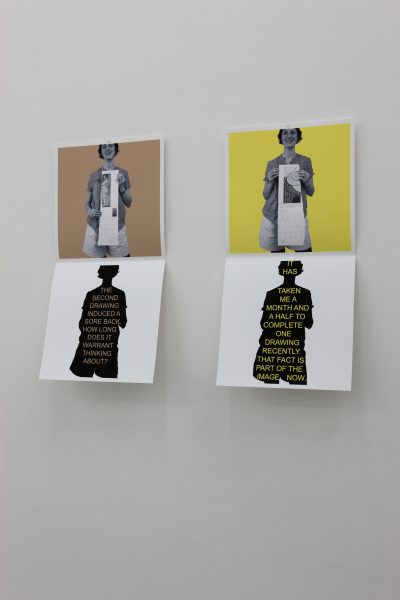 Kate Davis, Drawing study 1, 2008 and Drawing study 2, 2008Digital print on paper
Kate Davis, Drawing study 1, 2008 and Drawing study 2, 2008Digital print on paper
60×30 cm each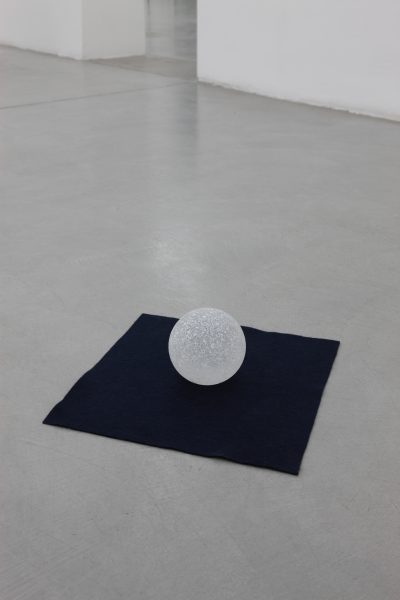 Nina Beier & Marie Lund, History makes a young man old (Milan), 2009
Nina Beier & Marie Lund, History makes a young man old (Milan), 2009
Crystal ball rolled to its destination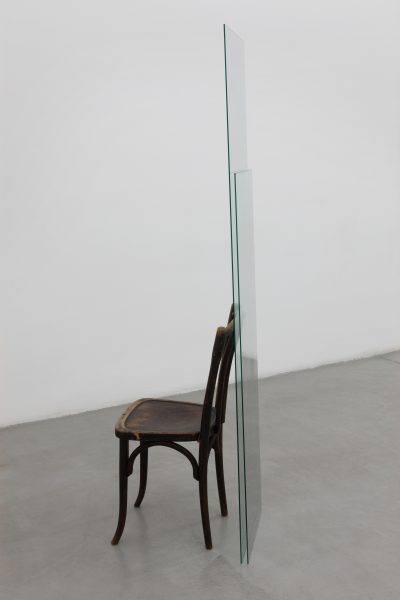 Katinka Bock, Je te tiens, 2008
Katinka Bock, Je te tiens, 2008
Wooden chair, glass plates, needle
180×158×40 cm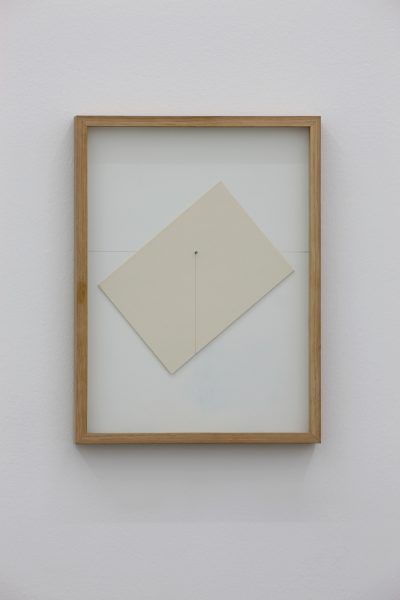 Katinka Bock, Kompass, 2008
Katinka Bock, Kompass, 2008
Paper, cardboard, nail, pencil
42×32 cm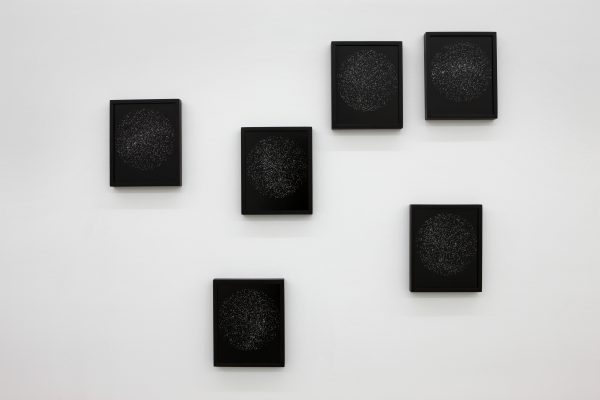 Lisa Oppenheim, 18 of 100 Photographs that Changed the World, 2007
Lisa Oppenheim, 18 of 100 Photographs that Changed the World, 2007
Silver gelatin photogram with graphite drawing
22,8×27,9 cmeach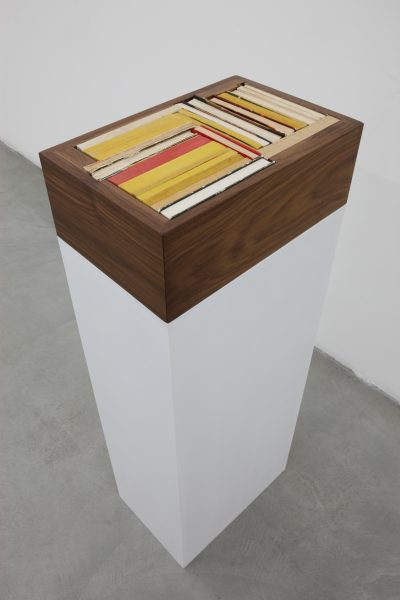 Nina Beier & Marie Lund, The House and The Backdoor, 2007
Nina Beier & Marie Lund, The House and The Backdoor, 2007
Books, wood, glue, varnish
18×25×35 cm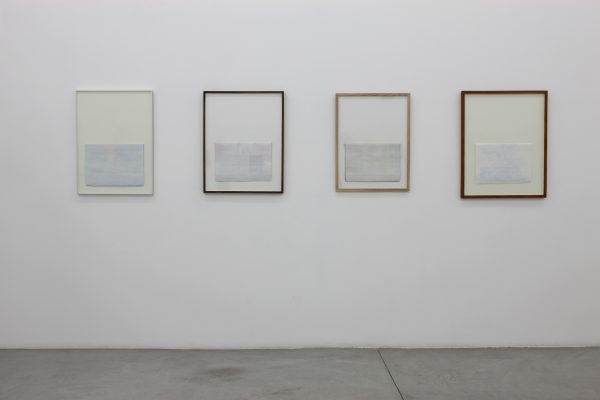 Nina Beier & Marie Lund, The Archives (Corea, Coréa, Korea), 2008, The Archives (Geen Raketten), 2008, The Archives (There can be no peace), 2008 and The Archives (Mach mit damit der frieden in lande bleibt), 2008
Nina Beier & Marie Lund, The Archives (Corea, Coréa, Korea), 2008, The Archives (Geen Raketten), 2008, The Archives (There can be no peace), 2008 and The Archives (Mach mit damit der frieden in lande bleibt), 2008
Vintage peace poster, wooden frame
75×59 cm each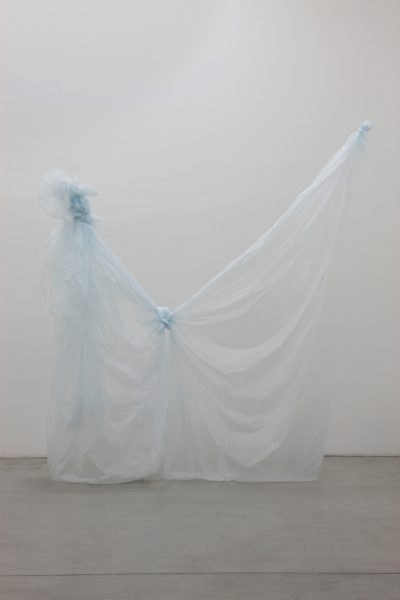 Karla Black, Up is open, 2008
Karla Black, Up is open, 2008
Polythene, chalk dust, thread
Dimension variable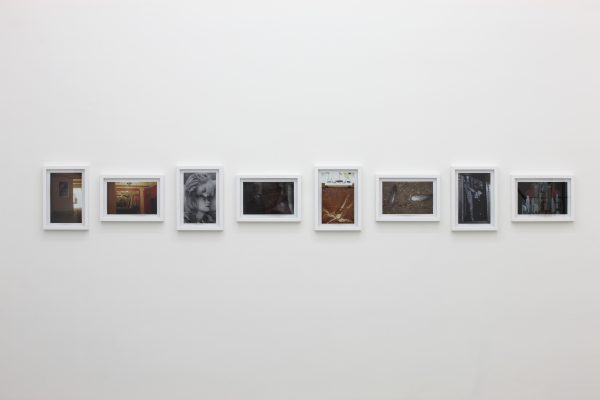 Susanne Winterling, Dear sister, 2007
Susanne Winterling, Dear sister, 2007
Photoprint
18,9×29,8 cm each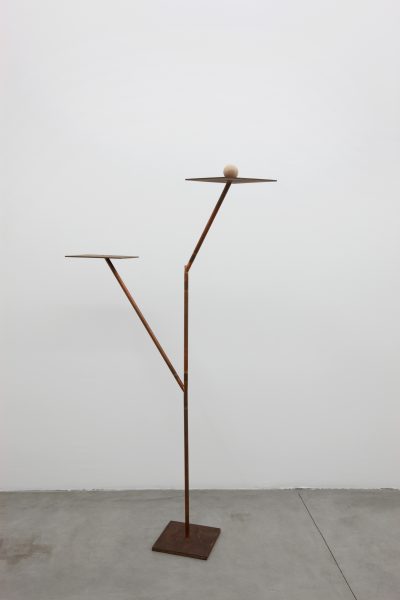 Lorna Macintyre, Gemini, 2006
Lorna Macintyre, Gemini, 2006
Wood, ash, cooper
201×104×60 cm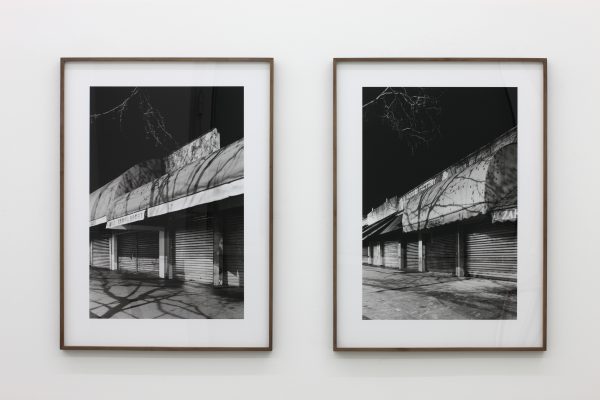 Annette Kisling, Porte 1, 2008 and Porte 2, 2008
Annette Kisling, Porte 1, 2008 and Porte 2, 2008
Pigment print on paper
85×62 cm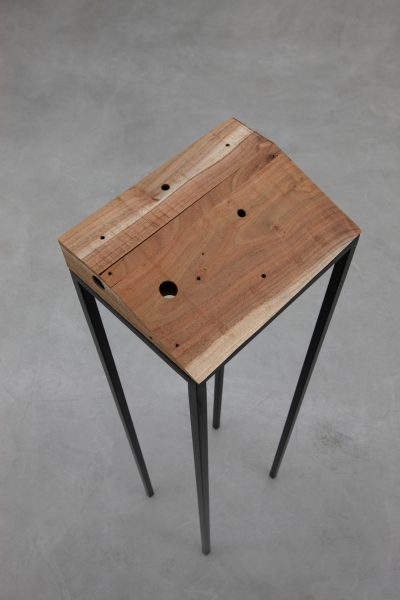 Becky Beasley, Night Fall (After Faulkner), 2007
Becky Beasley, Night Fall (After Faulkner), 2007
Acacia hardwood, wood glue, steel stand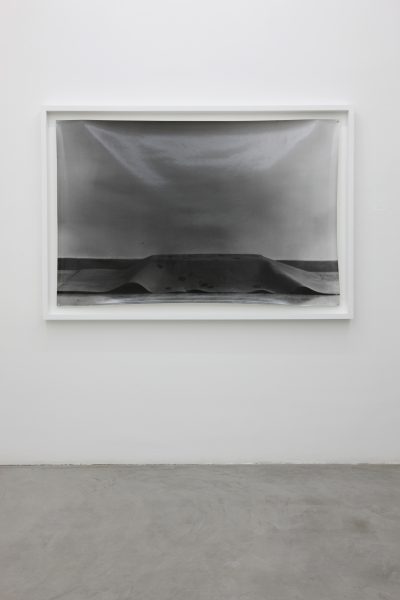 Becky Beasley, The Burrow, 2004110×184 cm
Becky Beasley, The Burrow, 2004110×184 cm Rosalind Nashashibi, Eyeballing, 2005
Rosalind Nashashibi, Eyeballing, 2005
16 mm film
10'









































